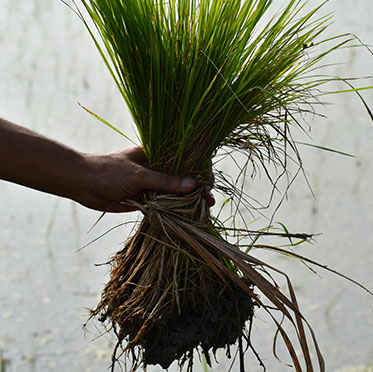





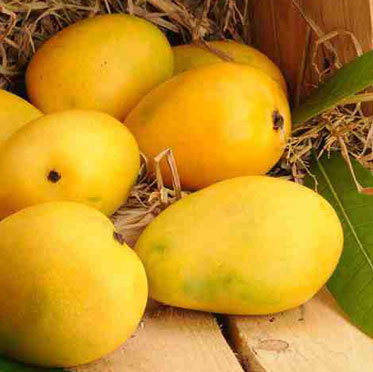
Banaganapalli mangoes
Banaganapalli mango is named after the town in Andhra Pradesh, Kurnool District whose farmers first introduced the Mango variety. Nawab of Banaganapalli encouraged the cultivation of the fruit. It is also known as Benishan or Beneshan of Safda. The skin of Banaganpalli Mangoes is thin with very light spots. The colour of the ripened fruits is golden yellow (primuline yellow), the texture of the pupp being pulpy (firm to meaty) and fiberless. The pulp content is 75-80%, stone is 10-15% and the skin is 5%.
It is mainly cultivated in the mandals of Banaganapalli, Panyam and Nandyal of Kurnool District. In addition, Coastal and Rayalaseema areas also cultivate this variety. The state of Telangana also ha it cultivation in some districts of Khammam, Mahabubnagar, Rangareddy & Medak.
Distinguishing characteristic of this mango is that it has soft skin with very light spots, Oblong in shape. It has thin seed surrounded by soft juicy tissue. It got GI tag in 2017 under horticultural products by Geographical Indication registry. This is also called as ‘King of Mangoes’.
Socio-economic status of mango farmers are mostly small and marginal farmers. On an average, 1.5 acre is the average holding of the Mango farmer. They earn on an average 50,000 per acre in a year. Average yield is 4 MT per acre. They export the best quality mangoes to US, UK, Europe, Japan Middle east etc. View Vendor List...

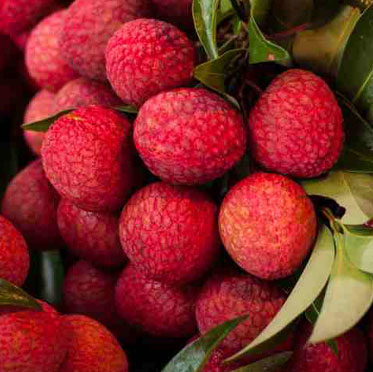
Tezpur Litchi
The two major regions in Tezpur for litchi cultivation are lichu pukhuri and porowa village. Historically, these regions are important. The fruit consists of 60% juice, 8% rag, 19% seed and 13% skin varying upon variety and climate. Litchi is also a source of vitamin C and minerals especially calcium, phosophorus and iron.
In 1922-24, late Padmanath Baruah, who was the chairman of Tezpur Medical Board brought some litchi layers from Kolkata and Mumbai and planted on the bank of that pukhuri.
The litchi orchard in porowa was started by Surjya Prashad Shing in 1954. At present there are 200 bearing old trees and 35 Ha newly planted trees. The Litchi from this orchard is exported nationally and globally.
GI VARIETIES
BOMBAIYA VARIETY: It is round and very large. Shape is just like an strawberry, seed is small. The color is brick red. Size is compact and scanted. Taste is sweet but slightly sour. Characteristic is profuse bearing.
BILAITI Variety: Round and very large. Shape is just like an apple, seed is small. Gi variety. The colour is brick red. Size is compact and scanted. Taste is Sweet. Characteristic is profuse bearing. View Vendor List...

Khola chilli
Khola chilli is a famous variety of chilli grown only in Khola village of Canacona block of Goa. It is traditionally grown on the hillslopes under rainfed conditions during the kharif season in a totally organic manner (using green manuring). Khola chillies are known for their brilliant red colour and medium pungent taste. These chillies are bright red and longer than other local varieties with thick smooth skin.
Khola chillies are used to prepare various value added products like Racheado masala, green chilli pickle, raw mango pickle, red chilli sauce, khola chilli powder and Khola chilli flakes. Khola chilli powder when added to food recipes gives an attractive red colour to the dish. It is also being used for edible or food grade red colour extraction. Papads made using khola chillies have a medium pungent taste that makes it a delicacy. These chillies are also rich in minerals like – K, Mn, Fe and Mg. View Vendor List...
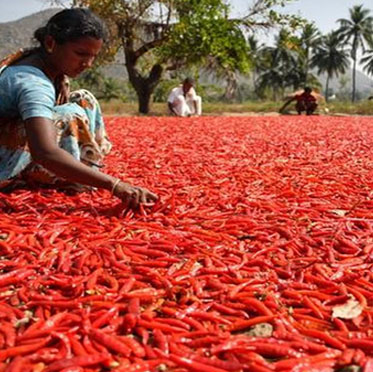

Pokkali Rice
The Pakkali land in 33 Panchayat municipalities and one city corporation are in Allepy, Ernakulam and Thrissur district of Kerala. The uniqueness about the Pokkali rice cultivation in Ernakulam is that it has some biotic relationship with the prawn cultivation, half month of prawn cultivation provide the fertile land for rice. Inthis manner, cultivators are able to stay engaged throughout the year. Pokkali Rice is medium bold in shape with very good cooking quality, special taste, average protein content of 7.5-8.7% and intermediate (above 20%) amylose content.
The rice is found in bold medium to gold shape with a very good cooking quality, special taste and with a good amount of protein percentage. It is not only organic way of farming but also create a nutrient rich culture across Kerala.
It grows in very highly acidic soil with pH been 3 to 4.5, yield potential of thousand to 1500 kg per hectare and it is mainly cultivated in June to September October and after that the traditional prawn cultivation take place.
ChootuPokkali, Chettivirippu, Cheruvirippu, Kuruva, Anakodan, Eravapandy, Bali, Orkayama, Orpandy and Pokkali are the traditional cultivars prevalent in this tract. It is very favourable for the marketing in this part of the country because its character is highly eco-friendly, protein rich, good for the patient suffering from cholera. Even the international Rice research Institute Philippines has developed many high yielding varieties by using this gene of Pokkali rice. View Vendor List...
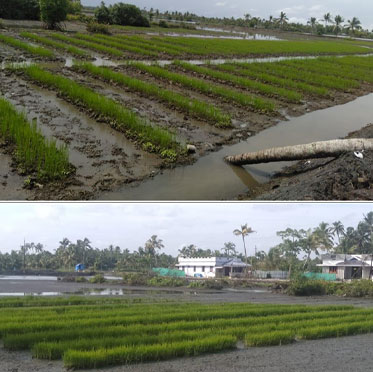


Vazhakulam Pineapple
Vazhakulam is the centre of pineapple trade in Kerala accounting for about 80% of Kerala’s pineapple harvest travel to entire country. Vazhakulam pineapple is located in Vazhakulam Panchayat in muvattapuzha division, around one hour away from Kochi in Ernakulam. The average fruit weight is 1300-1600 gms. The fruit is having a pleasant aroma, having a slightly conical shape fruit ‘eyes’ deeply placed, fruit flesh is crisp and golden yellow in color, juice is sweet with 14-160 brix and its acidity is 0.50 – 0.70%. It is a good soure of carotene, vatamins and minerals.
The socio-cultural history of Vazhakulam begun in the 1940s with a small scale production. However, with the favourable climate conditions, it turned into a commercial venture within 10 years.
Vazakulam pineapple has a shelf life of 15 to 20days to be consumed as a fresh fruit. It is grown in 10,000 ha in the district of Ernakulam, Kottayam and parts of Pathanamthitta district and even in the lower stretches of Idukki district.
Vazhakulam is the biggest pineapple market in India with more than 15 years of excellence. In 2009, it received a GI tag and the fruit has a pleasant aroma and slightly conical in shape and fruit flash is very crisp and golden yellow in colour. Because of its high sugar content, it is quite famous for the domestic consumption as well. View Vendor List...

Marayoor Jaggery
High sweetness without salty taste, high content of iron, less sodium content, less insoluble impurities, organic method of production and dark brown colour are the unique characters of this traditional sharkara. It is believed that the area of Marayoor in Kerala has a history dating back to the Mahabharata where the area was used by the Pandavas to hide during their vanavasam and hence the place was named as Maranjirunnayoor meaning ‘the place of hiding’ which in due course of time became Marayoor.
Initially, much of the focus was on rice cultivation and it was called the rice bowl of high ranges but later due to water scarcity this changed to sugarcane cultivation that required less water. Even today, the cultivation is mostly done by farm labourers who come from Tamil Nadu or those who belong to the Muthuva tribal group. View Vendor List...
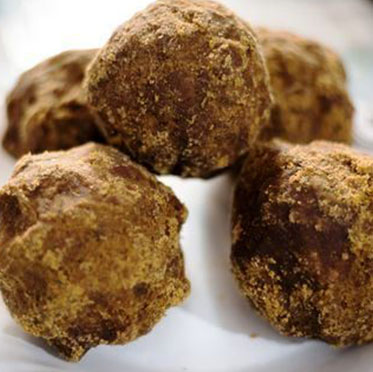

Nilambur Teak
Nilambur Teak is the first forest produce to receive GI tag in the entire country. Nilambur teak is the teak wood obtained from the forest areas, plantation and homesteads in Nilambur Taluk and Edavanna panchayat in Ernad Taluk of Malappuram district, Kerala. The rich alluvial deposits in the river banks of Chaliyar river enhance the soil fertility and thus enhance the quality of Nilambur teak. View Vendor List...
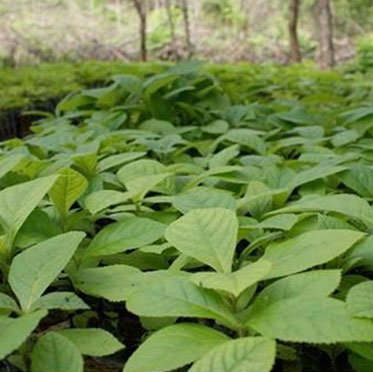

Kaipad Rice
Kaipad rice cultivation is the traditional organic rice produced in the saline prone (brackish water) coastal rice tracts in the northern districts of Kerala, which are Kozhikode, Kannur and Kasaragod. The GI registration certificate for Kaipad rice was obtained on March 3, 2014.
In Kannur district, around 3400 hectares of Kaipad rice fields are identified. In Kozhikode district, it is around 500 hectares and in Kasaragod district, it is around 200 hectares. Historically, these regions are known for their rice cultivation.
In the ancient literature pertaining to the region, rice tracts are mentionedin the historical records of Dr. Francis Bukkanan, an Englishman who was an employee of the East India Company. The rice tracts are mentioned as ‘KayalKandoms’ and local farmers are mentioned as ‘kuttadan’.
Today, the local name of ‘Kaipad’ is derived from ‘Kayalpadam’ (with ‘Kayal’ meaning backwater and ‘padam’ being another term for paddy fields)
While most cultivators are small and marginal farmers, Kaipad rice tracts follow a purely natural form of cultivation relying on the monsoon and sea tides. A single crop of rice is cultivated, on mounds, in a low to medium saline phase of the production cycle from June to October. During the high saline phase from November to April, traditional aquaculture is followed in these tracts with fish or shrimp farming. The rice, fish and shrimp farming is carried out in traditional organic way – without the use of any chemical fertilizer or pesticide.
The rice has excellent nutritive value and fetches a higher price due to its distinctive taste and nutritional value. There is the local tradition in which Kaipad rice cultivators gift rice flakes when they visit the homes of those outside these regions. View Vendor List...
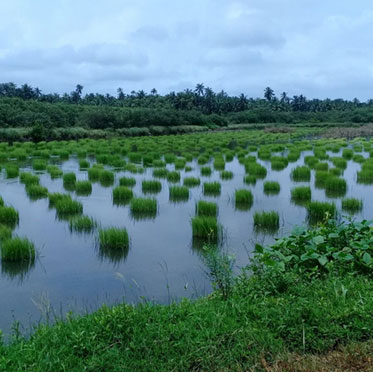

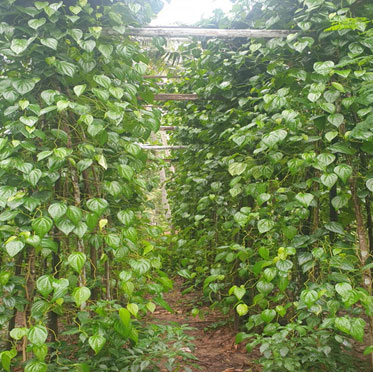
Tirur Betel Leaf
Tirur Betel Leaf is a kind of betel leaf cultivated in Tirur and nearby areas of district of Malappuram. This is also known as ‘Green Gold of India’. Tirur, Tanur, Tirurangadi, Kuttippuram, Malappuram and Vengara are the block panchayats in Malappuram District are famous for cultivation of Tirur betel leaf. The red laterite soil in the mostly U shaped Midland area lies between coastal plains in the west side and Western Ghats in the east side provides favourable conditions for the cultivation of Tirur Betel Leaf. View Vendor List...

Lasalgaon Onion
Lasalgaon is the largest market for onions in India as well as in Asian landmass. Lasalgaon onion has strong smell and a more pungent taste due to high hight percentage of Sulphur in the Lasalgaon soil. The size of onion bulb of Lasalgaon light red variety is bigger as compared to other varieties. This variety has approximately 16-17 layers of outer dried intact scales which leads to strong protection of inner bulb of onion.
Lasalgaon light red onion variety is well known because of its light red colour, pungent taste, shelf life and its big size. The atmosphere and soil profile of this region are exceptionally appropriate for this Onion.
The catchment area of the Lasalgaon Onion is just one Gram Panchayat of Lasalgaon in Niphad taluka, covering a small population of about 25 thousand. However, more than 60% of onion in the country is traded from Lasalgaon. The proprietors of Lasalgaon Onion are all the farmers who produce the unique variety of onion in that area. The required soil, climate and rainfall make a very unique combination to restrict the production of the light red onion variety only to this 6.09 square kilometre area of Lasalgaon.View Vendor List...
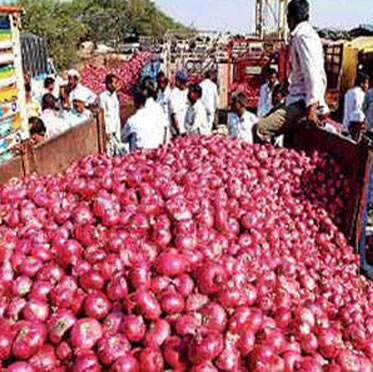

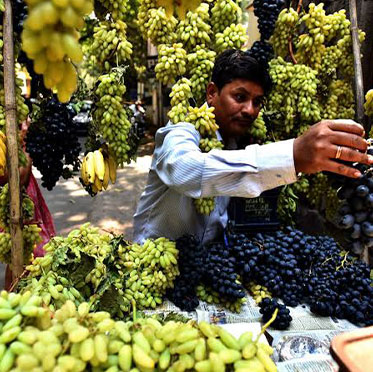
Nashik Grapes
Nashik Grapes is a variety of grape produce in Nashik district, which is known as the ‘Grape Capital of India’. Nashik contributes to more than half of the total grape export from the country.
Nashik is the main area when contrasted with entire world in which harvesting is done during February to April. Further, Nashik is the main district that lies close to 20 degrees and produces good quality of grapes. Other International regions lie somewhere in the range of 30 and 40 degrees.
The Nashik Grapes are produced almost in the entire district due to its conducive climatic condition. Out of the 15 talukas in Nashik, about 12 of them are involved in the production of Nashik Grapes which include Dindori, Niphad, Nashik, Kalvan, Igatpuri, Peith, Sinnar, Yeola, Nandgaon, Surgana, and Malegaon.
The Cooperative Partnership firm ‘Mahagrapes’ was established in 1991 with the objective of boosting the export of grapes by erecting facilities like pre-zones (AEZs) for grapes have been set up to promote the crop so that abundant raw material is available at low cost.View Vendor List...

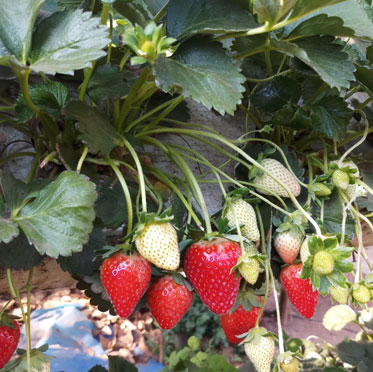
MAHABALESHWA Strawberry
The famous hill station of Maharashtra, Mahabaleshwar, is the abode of strawberries. Located in Western Ghats, it has rich and diverse flora fauna. Standard Percentage of glucose in strawberry is 7%. Mahabaleshwar strawberry, it is up to 10%, which makes it naturally sweeter. The red colour of mahabaleshwar strawberries is maintained due to the exact amount of heat and sunlight available in Mahabaleshwar, whereas, the colour of other strawberries is reddish-brown due to inadequate heat and sunlight.
The Australian Strawberry was introduced in the year 1920. The socio-cultural history cannot be separated from the geographical features including soil and weather conditions. The Cool climate and the fertile red soils thus are the perfect combination for superior quality f the product and distinct taste. Today many farmers have developed their own variety. Their saplings come from California.
Mahabaleshwar Strawberries are the bright red juicy berries whose cultivation is done by local farmers in Mahabaleshwar, Panchagani and Wai. The processing units in the area are Shriram Fruit Processing and Bhilare Mahabaleshwar Cooperative Society Limited.View Vendor List...

Waghya Ghevada
Waghya Ghevada also called as Koregaon Waghya Ghevada falls in the family of beloved rajma savoured by several northern states of India including the capital city, Delhi. This variety takes its name from the unique red lines it has on its faint pink surface which resembles tiger skin. That is why the name Waghya Ghevada. It is found in the Koreagaon taluka of Satara District. Jai Tuljabhavani Shetakari Bachat Gat, Deur applied for its GI tag in the year 2014.
Waghya Ghevada was not native to the region. It was first introduced in the year 1950 by Kashiram Mahajan, one of the farmers of the region, who brought seeds from Pune. The North Koregaon thus became the starting point. Since then Mahajan family descendants have been witness to its popularity and growth. The French bean is sweet in test and extremely rich in proteins. Being a drought resistant variety it requires less water and cycle is of 78-80 days. View Vendor List...
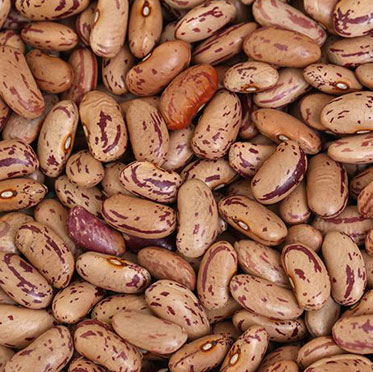

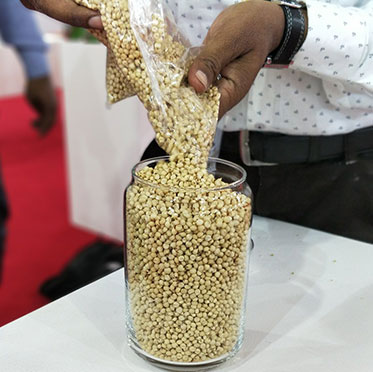
Mangalwedha Jowar
Mangalwedha jowar is a crop grown majorly in Mangalwedha taluka of Solapur, a district in Maharashtra. It is a traditional variety that has been cultivated for hundreds of years not only for producing grains for human production but also for fodder use. The Mohol Research Centre in Solapur also selected this local “Wan” variety in 1930 for creating hybrid varieties of Jowar. Mangalwedha jowar thus has a history of hundreds of years as even before 1930 this variety was the major one being cultivated in the post monsoon season.
Mangalwedha jowar, renowned for its unique taste which is a little sweet, and its nutritional value, has a grain which is bold and lustrous and also has a thin pericarp. It provides a good quality as well as yield making it suitable for both grain and fodder use. The grain is also produced in other areas besides Mangalwedha, but the original seeds from Mangalwedha need to be used after every few years to maintain originality of the variety as it undergoes hybridization. Various varieties have been developed by ICRISAT by using the genes from this variety called the Mangalwedha Maldandi (M-35-1). It also contains a high level of glucose, thus giving it a sweeter taste and people in Maharashtra generally prefer the roti made from Mangalwedha jowar due to its good taste and softness. View Vendor List...

Solapur Pomegranate
Solarpur is known as the Pomegranate city for its high level of pomegranate production. High temperature and low moisture content in the atmosphere for sufficiently long period of Solapur District is responsible for obtaining unique sweet taste with desirable acidity of Solapur Pomegranate. Solapur Pomegranate has TSS-16.100 Brix and Acidity 0.45% (cv. Ganesh). TSS-15.95 Brix and Acidity 0.50%(cv. Bhagwa). Solapur Pomegranate is heavier and has more number of arils than other Pomegranate varieties.
Pomegranate is a popular dessert fruit, with other names like “Anar” or “Dalimb” in local parlance. Solapur produces nearly 85% of the pomegranate production of Maharashtra.
It was introduced as a cash crop in Solapur in 1974 by Mr. Prabhakar Chandane, a leading farmer from the Sangola tehsil of Solapur. Due to the drought like situation in Solapur in 1972, demand for growing pomegranate increased as it is a hardy plant and can generate good returns even in tough conditions. As less rainfall is received by the Sangola taluka, it was the first one to be selected for pomegranate cultivation and nearly 1400 of them were planted there in 1974.
Nearly 3 Decades ago, the pomegranate cultivation in Solapur spanned nearly 1850 ha., producing around 11000 tons of pomegranates, but after 1975 the production has increased tremendously. The area under pomegranate production has expanded significantly and now the fruit is also being exported to countries like UAE and UK, and a sophisticated a trade network has developed between the local producers and the international buyers. View Vendor List...
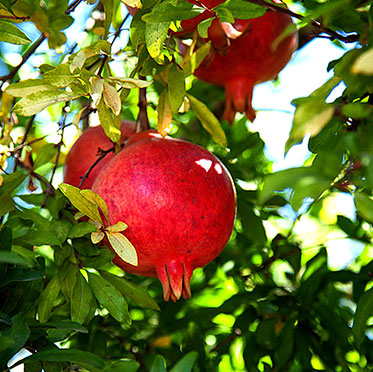

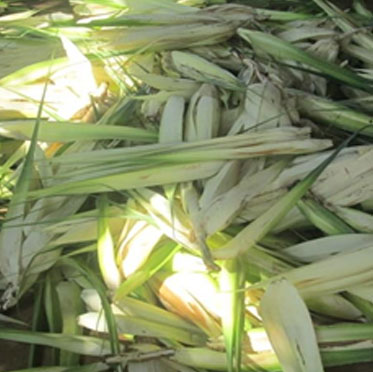
Ganjam Kewda Flower
Kewda, a bushy shrub know for the pleasant fragrance of its flowers is dominantly found in India along the coast of the Ganjam district in Odisha between the rivers Bahuda and Rushikulya in an area of 675 km sq. along the coast of the Bay of Bengal. The soil and climatic along the Ganjam coast are particularly suitable for its growth. The plant is found growing widely, often forming thickets along roadsides, borders of agricultural fields, banks of rivers and canals, and on the seashore.
The male flowers of the Kewda plant have a pleasant, fruity odour and find use as raw material in the perfume industry, forming the backbone of the economy of Coastal Ganjam. The aromatic extracts obtained from the Kewda flowers grown in Ganjam have been found to be of India. This is attributed to the favourable geo-climatic conditions in Ganjam for the growth of Kewda planation, in particular the tropical coastal climate along with high organic carbon content (0.63-1.24%) and water holding capacity (23-40%) of the soil found in the Kewda belt. With over 10 million Kewda flowers and 1,57,155 kg of Kewda industry generates business worth Rs.40 crores annually in the district. View Vendor List...

Ganjam Kewda Rooh
Kewda flowers are used as raw materials in distilleries in order to produce Kewda Rooh (100% pure Kewda extract) and two lower grade extracts, namely, Kewda Attar and Kewda Water. About 90% of India’s Kewda extracts are produced in Ganjam alone. The principal chemical constituent of the kewda extract which is responsible for the characteristic odour is 2- phenylethylmethylether (PEME – 60 to 80%).
Essential oils are extracted from the kewda flowers through the process of hydro-distillation. Depending on the concentration, 3 grades of distillates/ essences are produced – kewda rooh, kewda attar and kewda water. Kewda rooh or kewda absolute is the 100% pure kewda extract which finds use as a stimulant and an antispasmodic. Kewda attar is kewda extract absorbed into a base such as sandalwood oil for use in perfumery, cosmetics, tobacco flavouring and pan masala. Kewda water is a heavily diluted and cheap by-product of hydro-distillation suitable for use as a flavouring agent in sweets, desserts and soft drinks.
Even today, traditional distilleries are used for the extraction of Kewda essence. These distilleries consist of a row of copper pots (degs) that are filled with flowers and water. The degs are connected to second, parallel row of water basins (bhabka) via bent bamboo sticks (chonga). As the degs are heated, the volatile aromatic compounds enter the bhabka and get condensed into a distillate. There are 139 Kewda distillery units in Ganjam, primarily located along the belt of Kewda plantation. Ganjam alone accounts for 90% of Kewda production in India, with the Kewda industry generating ₹40 crores annually in the district. The industry employs small farmers, Women SHGs and entrepreneurs and forms the backbone of the economy of coastal Ganjam. View Vendor List...
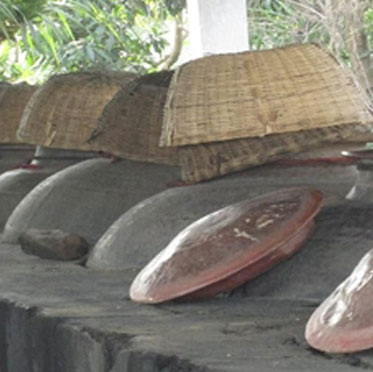

Kodaikanal Malai Poondu
Kodaikanal Malai Poondu has pungent taste and odour. Bulbs are usually pale yellow with a purple tinge. Copper plate inscription have been found which refer to certain territories in Kodaikanal as vellaipoodu kandam meaning the garlic continent. The Vadugapatti market, now in adjoining district of Theni has been one of the established garlic trading centre.
Kodaianal Malai Poondu is an excellent herbal medicine as it is rich in antioxidants and organo sulphur compounds. Poondu rasam is prepared with pepper and kodiakanal malai poondu to cure digestive issues. Individual garlic clove is rubbed over a bad headache. Poondu laegiyum is medicinal paste prepared with malai poondu for post-delivery healing
It is hard neck garlic which can be preserved easily by hanging from low ceilings of smoke filled kitchens. When properly stored the malai poondu lasts for 8-11 months and thus unlike other garlic varieties, malai poondu can be sold round the year. View Vendor List...
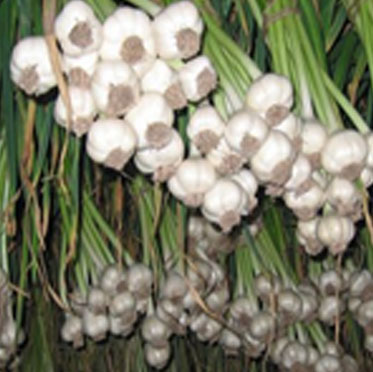

Ethamozhy Tall Coconut
The Ethamozhy variety comes under the East Coast Tall Variety of coconut. It can grow to a length of above 30m or 100ft. It is an indigenous variety of coconut palm and it is resistant to various pests and diseases which affects other varieties such as the dwarf ones. It grows well in Saline and Red soil and it is largely un-irrigated in the district. View Vendor List...
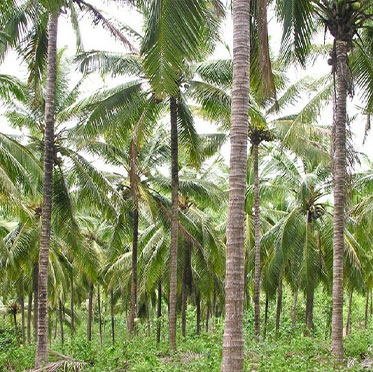

MANGO MALIHABADI DUSSEHERI
Malihabadi dusseheri is a variety with fibreless flesh and with pleasant flavour and taste. Mango Malihabadi Dusseheri has a small to medium sized fruit with elongated shap, which is yellow.
Dusseheri ripens after 6-7 days of harvesting at maturity and it stays for 5 days after ripeining. Dusseheri mango grows well in tropical climate. The ideal temperature range flowering. Rain during flowering is derimenatal to the crop as it interferes with pollination. In color, right characteristic flavour and good keeping quality. View Vendor List...
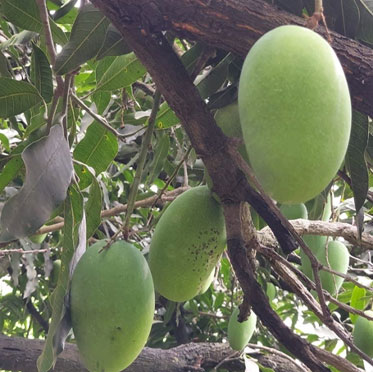

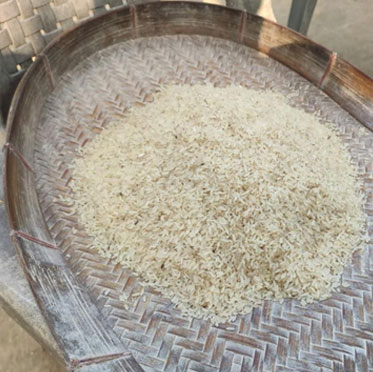
Tulaipanji Rice
Tulaipanji rice is non-basmati aromatic rice with GI status. It is being produced mostly in the Uttar Dinjapur district. There are only some scattered pockets in the Dakshin Dinajpur district which do cultivation of Tulaipanji rice. Mohiniganj area of North Dinajpur is famous for Tulaipanji rice.
The first modern mention of Tulaipanji rice is found in the district Gazetteer of Dinjapur written by Francis Buchanan Hamilton in the year 1833. There are some old Bengali literatures which mentions the use of Tulaipanji rice for serving guests during social occasions. It was also used for moments like making Pyasam (Kheer) for guests during home arrivals. This rice has been in existence for more than 1000 years and has been preserved by the cultivators of Dinjapur area and particularly in Present day North Dinjapur district.
The farmers producing the Tulaipanji rice in this district get good price for their product. The online selling of this branded rice has also increased their income level. However the scale of production of Tulaipanji rice in South Dinjapur district is too low and too scattered to gain any substantial benefit. An effort in increasing the cultivation area of Tulaipanji rice in district and then forming a Farmer Producer organization can help a lot in this direction. View Vendor List...

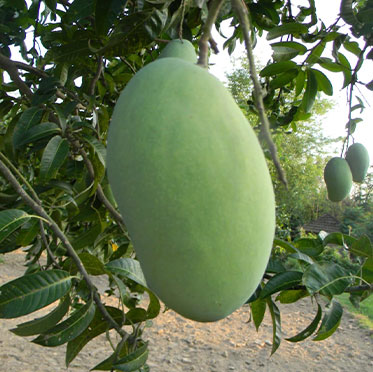
Malda Fazli Mango
These mangoes are grown in all 15 blocks of Malda district. This variety is relatively larger than the other mangoes and has lots of pulp. A single mango can weigh up to 1 kg. This variety is used in making pickles and jams. These mangoes weigh between 600-1000gms.
The thickness of their skin is medium and has yellowish green colour. The colour of the flesh is light orange when it is ripe to its fullest.
The TSS of this variety is 15. It is a late variety. This variety is grown in the blocks of Chanchal–I, Chanchal–II, Ratua–I, Ratua–II Harishchandrapur–I Harishchandrapur–II English Bazar Gazole Habibpur Kaliachak–I Kaliachak–II Kaliachak–III Manickchak Old Malda Bamangola.

Malda Lakshman bhog Mango
These mangoes are grown in all 15 blocks of Malda district. It is also called Lakhanbhog and weigh between 200-300gms. The thickness of their skin is thin and has yellowish orange colour. The colour of the flesh is medium orange when it is ripe to its fullest. The TSS of this variety is 16. This variety is grown in the blocks of Chanchal–I, Chanchal–II, Ratua–I, Ratua–II Harishchandrapur–I Harishchandrapur–II English Bazar Gazole Habibpur Kaliachak–I Kaliachak–II Kaliachak–III Manickchak Old Malda Bamangola. View Vendor List...
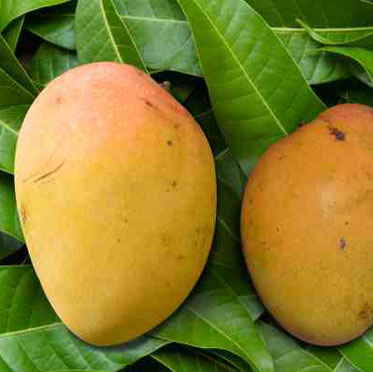

Gobindobhog Rice
Gobindobhog rice, locally called Khas Dhan, is one indigenous variety of rice that is produced locally. It has a distinct aroma and is white non-Basmati type, buttery, short- grain rice. It got its name as it constitutes and essential ingredient of the offerings made to lord Govinda.
The milled rice of ‘Gobindobhog’ contains low-intermediate (17.9%) amylose, 7.2% protein, elongation ratio and medium-strong (2.56) aroma. It got Gi registered in 2017. View Vendor List...
